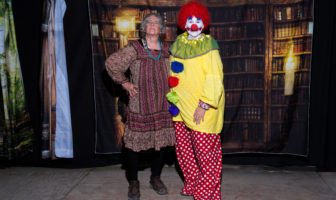The Weizmann Institute of Science hosts a TEDx event on excellence in science and science education.
By Sam Jackson
Dr. Ran Peleg is having trouble breathing. He stands there, in the middle of a crowded auditorium and before a live webcam, gesturing to show he’s not taking in any air. But even if anybody tried to help him, they’d simply look foolish in the next instant, when he pulls down an imaginary helmet over his face. Suddenly, he’s all right. As he mimics an astronaut on the moon, he begins to demonstrate what a balloon would do if you managed to fly one to the moon and attempted to blow it up using helium.
So began the May 17 TEDx talk about excellence in science and science education hosted by the Weizmann Institute of Science in Rehovot, Israel. The event gathered the best and brightest of both teachers and students of various sciences, and during the course of 10 speeches, presenters discussed breakthrough scientific discoveries and unique methods of teaching, like the approach Peleg demonstrated. Chief among the speakers were three of the Weizmann Institute’s finest: Professor Oded Aharonson of the Earth and Planetary Science Department, Dr. Maya Schuldiner from the Molecular Genetics Department and Dr. Ron Milo, representing the Plant Sciences Department. Fortunately for those unable or unwilling to risk the flight (or who didn’t get the exclusive invitation), the entire talk was broadcast live on the institute’s TEDx website.
The primary subject of the talks was the new ground broken in the realm of biology. Presented by Dr. Eli Arama and Professor Eran Segal, the first revealed the exploration into the long-standing mystery of what becomes of parental mitochondria during fertilization and how that pertains to us, especially when it comes to in vitro fertilization. A study conducted on fruit flies showed that cellular vesicles within the egg break apart the sperm during fertilization and consume the mitochondria, which can help us to understand why in vitro fertilization pregnancies often fail. The second talk was a showcase of mapping DNA’s cousin, RNA, the discovering of patterns within a patient’s RNA and genes, and the possibilities of those discoveries for reading our genetic code and enabling a machine to translate it.
Scientific breakthroughs aside, it was the teaching methods that proved to be the most interesting portion of the talks. Peleg’s mimes and acting methods added quite a bit of humor to the proceedings as he explained how he teaches memorization through his fluid movements, and how placing an emphasis on drama and storytelling can affect how science is described. Another speaker later discussed his use of time-lapse photography to impose the wonder of technology on his students, showing images that are otherwise too slow for the human eye to capture. He explained high-speed lapsing allows for students to be able to watch a scientific transformation. Another speaker brought out a guitar and shared one of the songs he used in the classroom to instruct students on scientific concepts.
Despite the buzzwords and scientific jargon, the event did set a pace that any layman could follow, and dazzled throughout every unique presentation. Indeed, the effects of what was discussed could be more far ranging than we know with incredible advances in genetics and biology.




